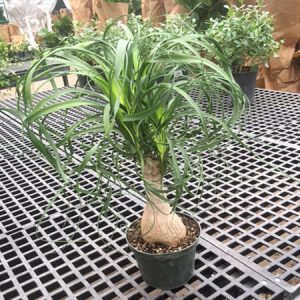Description
Vitis – Grape – Vine – Grape Vine –
There are about 65 woody, deciduous tendril climbers, occasionally shrubs, within the Vitaceae family, in this genus. They occur in woodland, woodland margins, and thickets in the Northern Hemisphere. They have flaking bark and alternate, simple to lobed, sometimes toothed leaves often colors well in autumn. Tiny 5 petalled green flowers are produced in panicles from the leaf axils in summer and are followed by fruits (grapes), which in some species are edible or used to make wine. The ornamental grapes are cultivated for their foliage and fruits, grow over trellis, pergola, or fence, or through a large shrub or tree, or train against a wall.
Grow in well drained, preferably neutral to alkaline, humus rich soil in full sun or partial shade.
Prone to downy mildew, canker, dieback, gray mold (botrytis), Pierce’s disease, black rot, powdery mildew, mushroom root rot, and various leaf spots, Grape leaf skeletonizer, Japanese beetle, scale insects, mealy bugs, black vine weevil, and the American root aphid, phylloxera.
Vitis davidii – This woody, deciduous climber from China grows 25’ feet or more high. It produces heart shaped, shallowly lobed, toothed, glossy, dark green leaves, to 10” long, blue-green or blue-gray beneath, and turn scarlet in autumn. In autumn it bears edible, spherical black grapes, ½” across.
Zones 7-10





